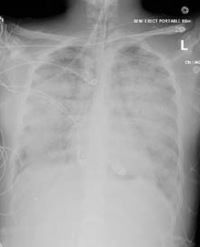
Role of Implementing Proning Protocol as Rescue Treatment for severe ARDS in Trauma Patients - A Level 2 Trauma Center Experience
Background: Acute Lung Injury (ALI) and Acute Respiratory Distress Syndrome (ARDS) make up 7-10% of admitted patients (Koulouras, Esteban). Large randomized trials and meta-analyses have shown that prone ventilation when used in conjunction with lung protective strategies early and in sufficient duration may improve outcomes in patients with ARDS (Koulouras, Guerin, Voggenreiter, Fridrich, Gattinoni). As a new community based, Level 2 Trauma Center at a 455-bed community hospital, we found it necessary to have prone ventilation protocols in place in patients with traumatic ARDS.
Materials and Methods: In this paper, we present a case report of a young female patient who sustained multiple traumatic injuries with eventual development of ARDS. Prone ventilation was initiated with positive patient outcomes. A literature review was performed on PubMed using the following terms “ARDS”, “Prone ventilation”, “Traumatic Lung Injury”, and “Lung Protective Ventilation”.
Results and Discussion: The Berlin criteria and described pathogenesis of ARDS show inflammatory lung edema from increased permeability of pulmonary capillary endothelial cells and alveolar epithelial cells leading to reduced lung gas volume and development of nonaerated regions, resulting in respiratory failure which required invasive ventilation (Kim, Chiumello, Pelosi, Ranieri). However, despite recent advances in management of ARDS, mortality associated with the condition remain between 40-60% (Jozwiak, Papazian). The Proning Severe ARDS Patients (PROSEVA) trial demonstrated prone ventilation to decrease 28-day and 90-day mortality along with decreased time to extubation (Jozwiak, Guerin, Koulouras).
Conclusion: ARDS is a difficult condition to treat, as evidenced by persistently high mortality and morbidity. Polytrauma patients are at higher risks for development of ARDS and necessitate the most aggressive management. Using evidence from literature available, along with the case report described, we found it important to create standardized protocol for when prone ventilation should be initiated in community based centers with less ARDS volume
Tran Tu Huynh1 , James Ren1* and Narinder Paul Grewal2
